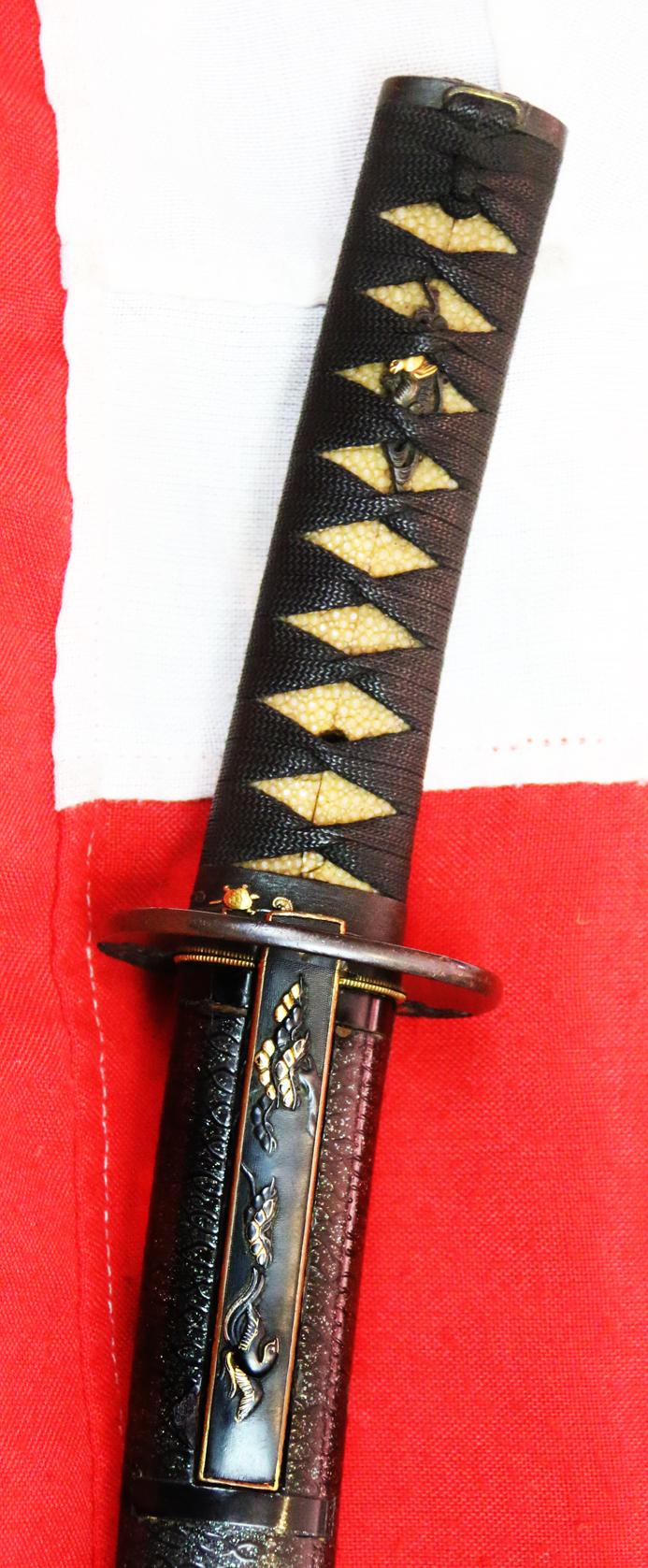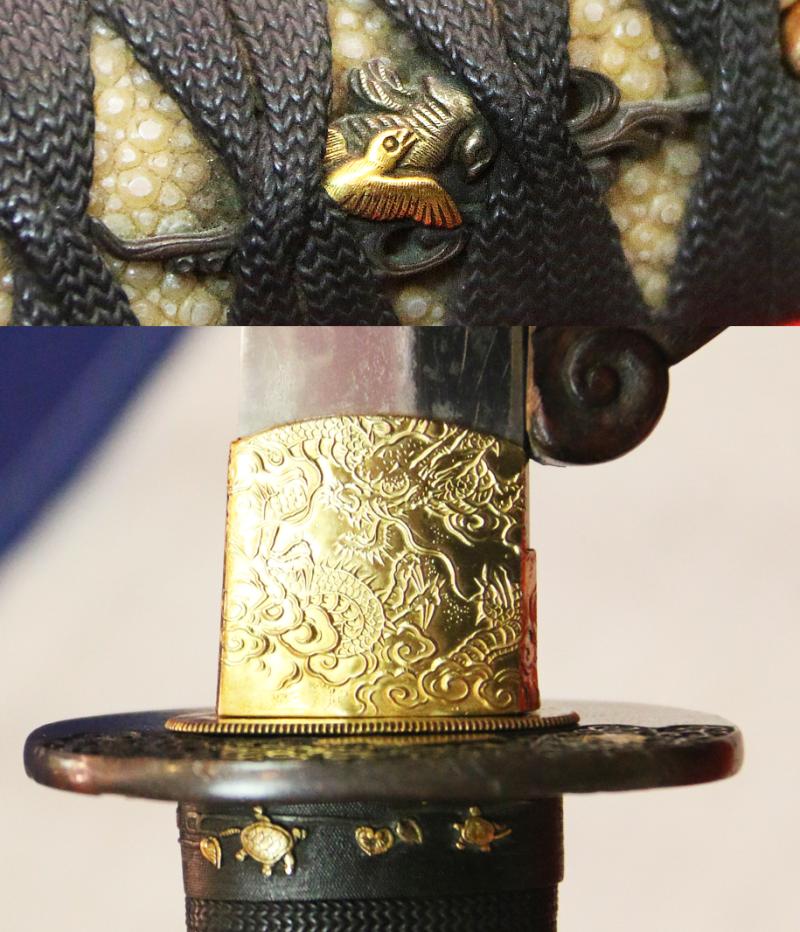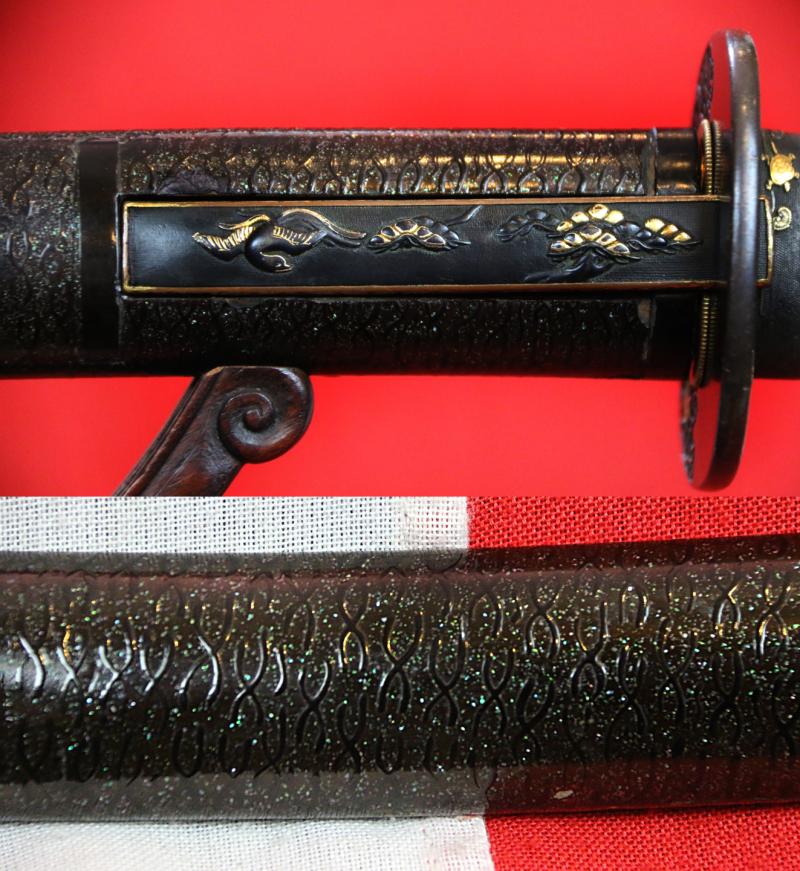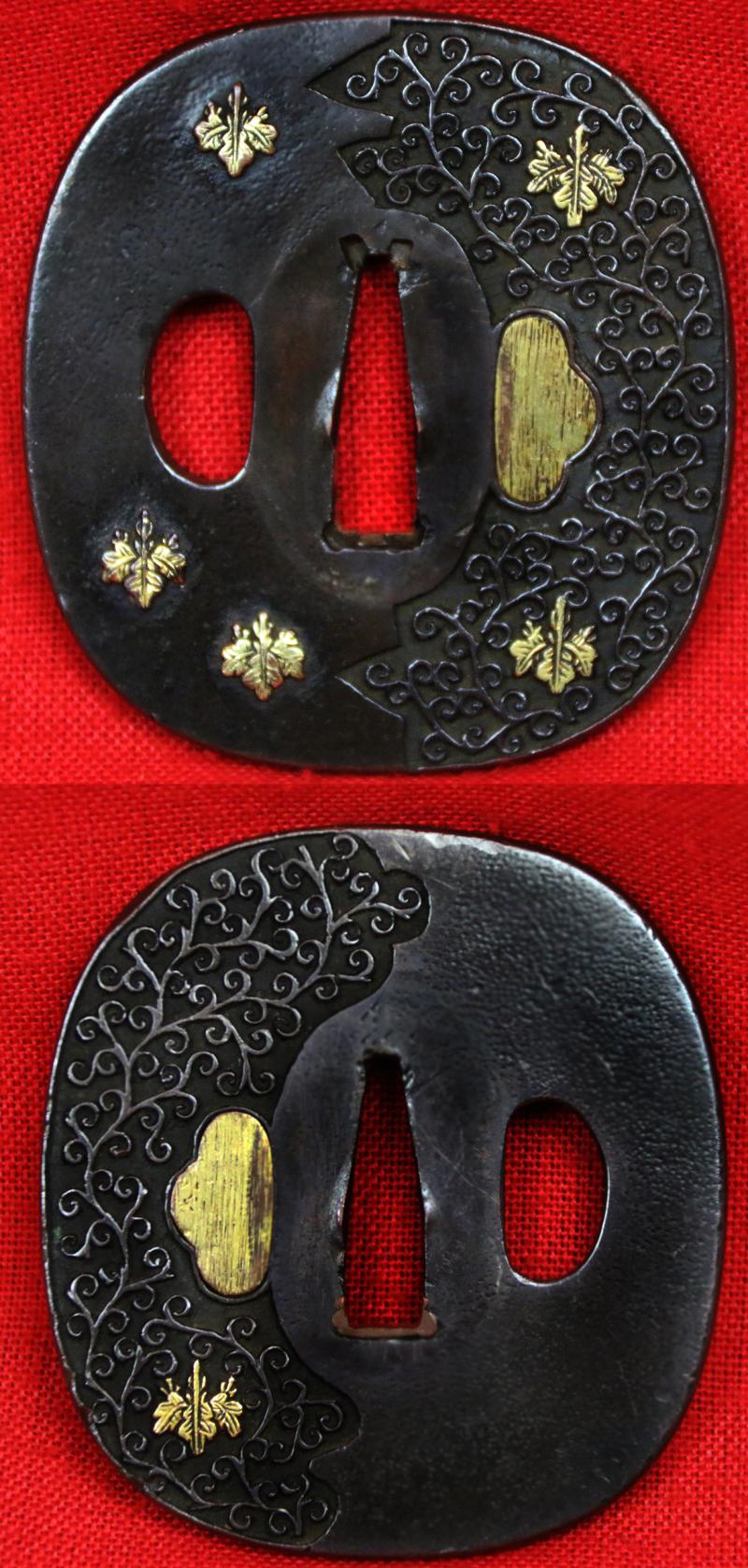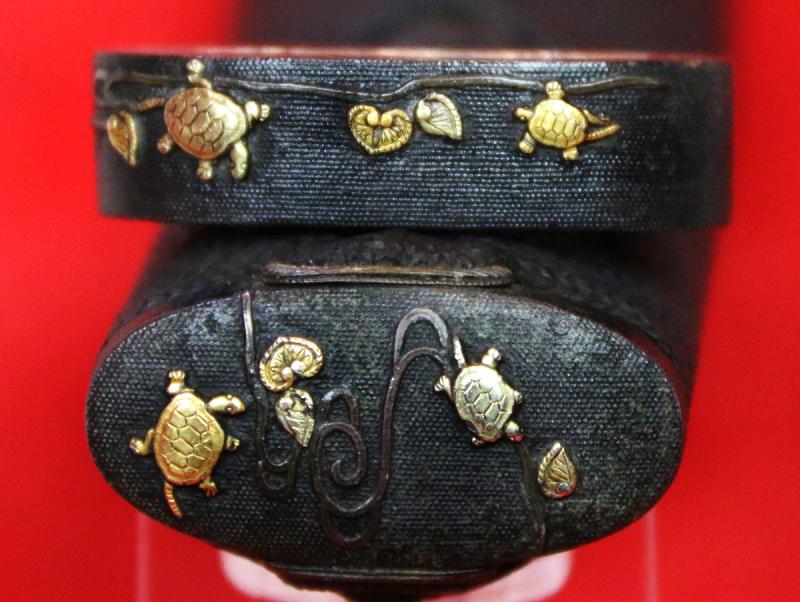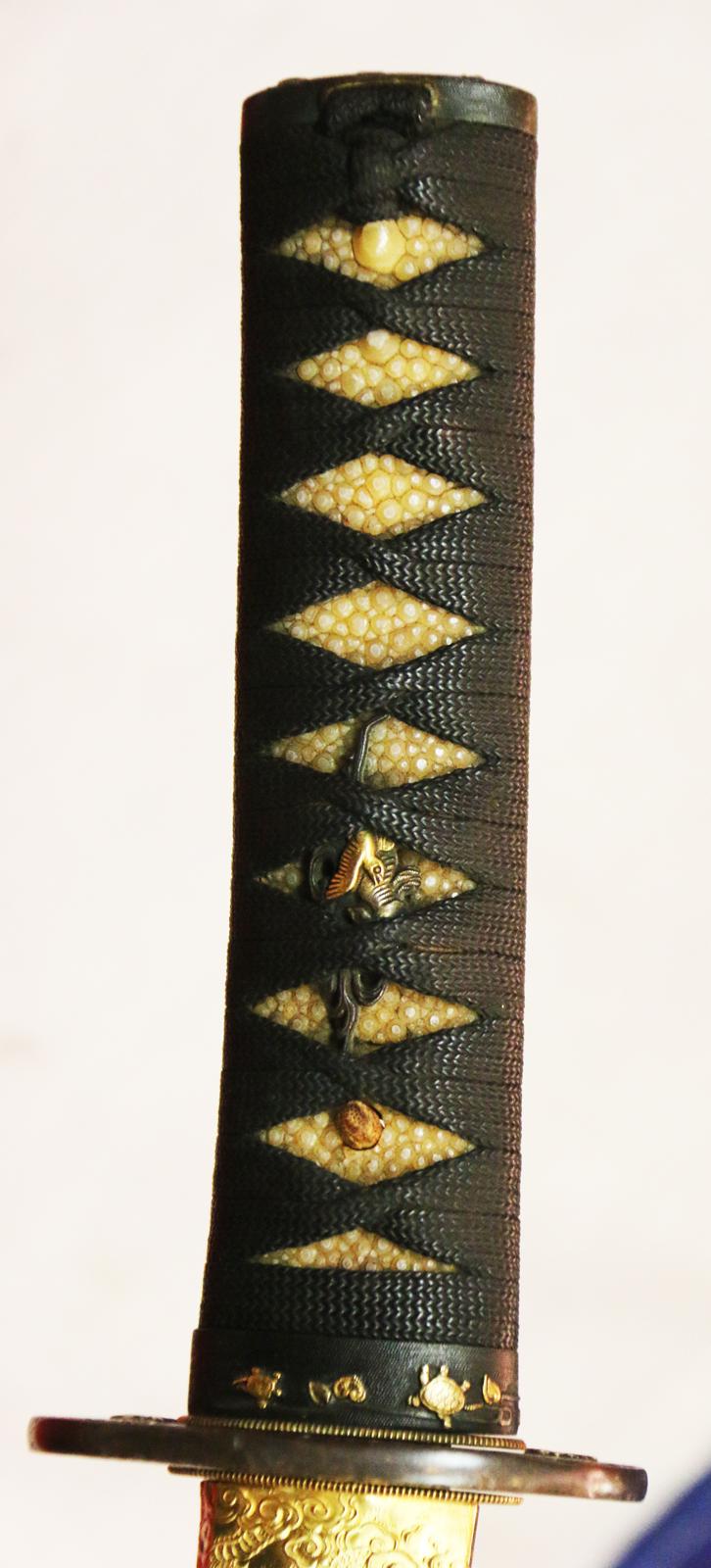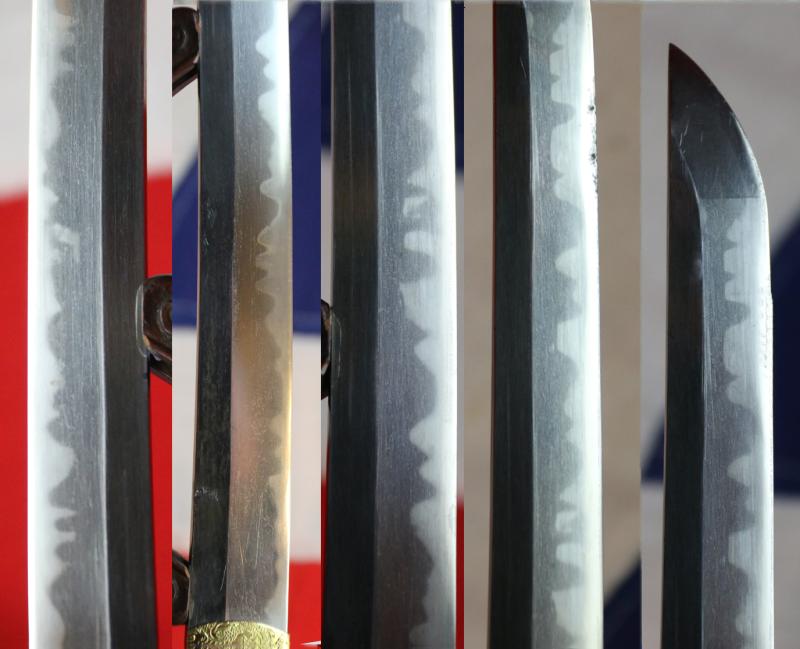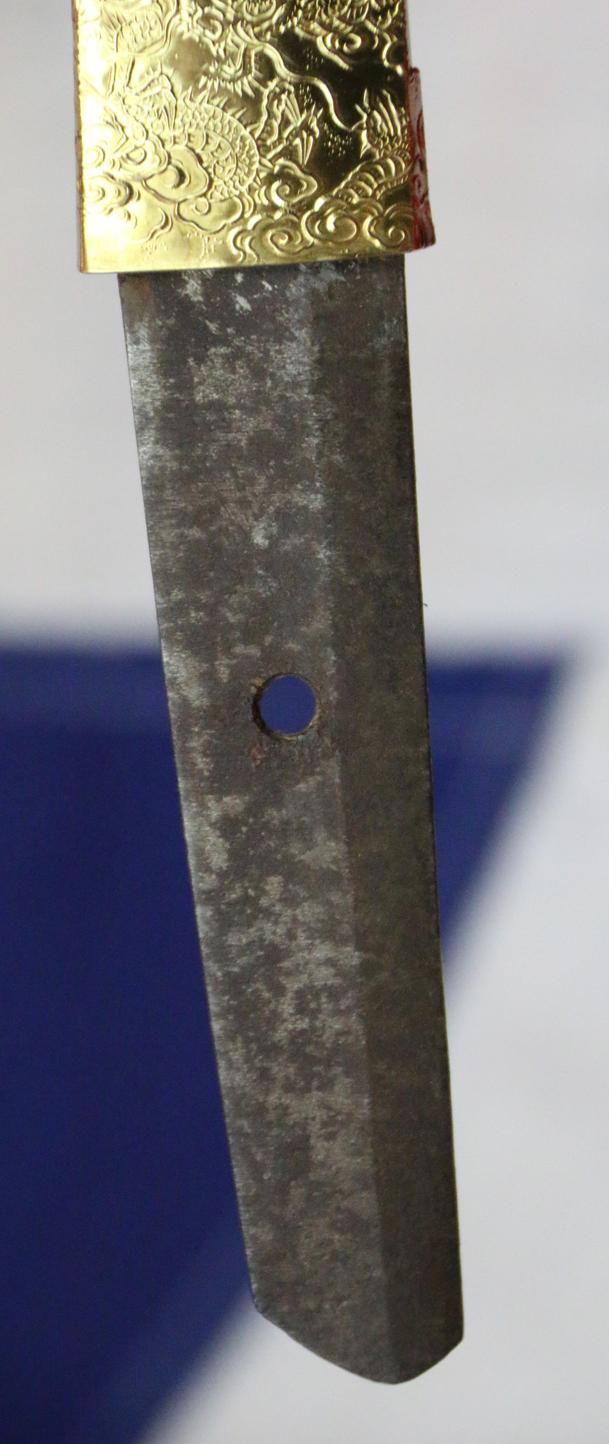A Majestic Edo Period, 425 Year Old, Samurai Wakazashi Of Museum Quality. With a Pure Layered Gold Habaki of the Ryojin, The "Dragon King," & Fuchigashira With His Pure Gold Servants The Sea Turtles
A most splendid samurai sword, the secondary sword of likely a daimyo, clan lord, around 425 years old. The blade bears a wonderous hamon of incredible activity with the Shinto Osaka school designs of gunome midare ba, with crab claws. it has just been expertly cleaned and conserved and looks spectacular.
The saya is one of the most beautiful we have seen with all its original urushi lacquer of a black base ground decorated with crushed abilone, over lacquered with clear urushi nad then takebori symbols of open ended infinity throughout. It has its all original Edo period shakudo and gold mounts of superlative beauty of the turtles. According to traditional Japanese beliefs, the turtle is a haven for immortals and the world mountain, and symbolizes longevity, good luck, and support. It is the symbol of Kumpira, the god of seafaring people especially. He is said to have lived tens of thousands of years.
Ryujin or Ryojin "dragon god", which in some traditions is equivalent to Owatatsumi, was the tutelary deity of the sea in Japanese mythology. This Japanese dragon symbolized the power of the ocean, had a large mouth, and was able to transform into a human shape. Ryujin lived in Ryugu-jo, his palace under the sea built out of red and white coral, from where he controlled the tides with magical tide jewels. Sea turtles, fish and jellyfish are often depicted as Ryujin's servants.
The tsuba is an absolute gem in shakudo with hammered pure gold onlaid paulownia leaves set in half surface decorated hand carved takebori open fretwork of tendrils. Paulownia is a symbol of good fortune, royalty, and the imperial family in Japan. It's depicted in the seal of the Prime Minister and used in various government emblems. The menuki are birds of paradise and shakudo and gold flying in clouds and match the very same design on the kodzuka, a bird of paradise, of gold and shakudo, utility knife, stored in the traditional kozuka saya pocket.
Samurai have been describes as "the most strictly trained human instruments of war to have existed." They were expected to be proficient in the martial arts of aikido and kendo as well as swordsmanship and archery---the traditional methods of samurai warfare---which were viewed not so much as skills but as art forms that flowed from natural forces that harmonized with nature.
An individual, in certain circumstances, apparently didn't become a full-fledged samurai until, some say, he wandered around the countryside as begging pilgrim for a couple of years to learn humility. Again this may be part of the myth. However, when all his training was completed a samurai trainee that achieved samurai status and received a salary from his daimyo, paid from taxes (usually rice) raised from the local populace, he truly became the very best at his art in the world of sword combat
Swords in Japan have long been symbols of power and honour and seen as works of art, which is exactly what they are.
In Japan the term samurai evolved over several centuries
In Japanese, they are usually referred to as bushi (武士,) or buke (武家). According to translator William Scott Wilson: "In Chinese, the character 侍 was originally a verb meaning 'to wait upon', 'accompany persons' in the upper ranks of society, and this is also true of the original term in Japanese, saburau. In both countries the terms were nominalized to mean 'those who serve in close attendance to the nobility', the Japanese term saburai being the nominal form of the verb." According to Wilson, an early reference to the word samurai appears in the Kokin Wakashū (905–914), the first imperial anthology of poems, completed in the first part of the 10th century.
Originally, the word samurai referred to anyone who served the emperor, the imperial family, or the imperial court nobility, even in a non-military capacity.It was not until the 17th century that the term gradually became a title for military servants of warrior families, so that, according to Michael Wert, "a warrior of elite stature in pre-seventeenth-century Japan would have been insulted to be called a 'samurai'".
In modern usage, bushi is often used as a synonym for samurai
Every item is accompanied with our unique, Certificate of Authenticity. Of course any certificate of authenticity, given by even the very best and highly esteemed specialist dealers, in any field, all around the world, is simply a piece of paper,…however, ours is backed up with the fact we are the largest dealers of our kind in the world, with over 100 years and four generation’s of professional trading behind us. The current two partners alone, combined together, have over 96 years of professional experience within the trade.
Overall the condition is excellent for age, with just a few small marks withing the lacquered saya urushi,
Code: 25752
9550.00 GBP


